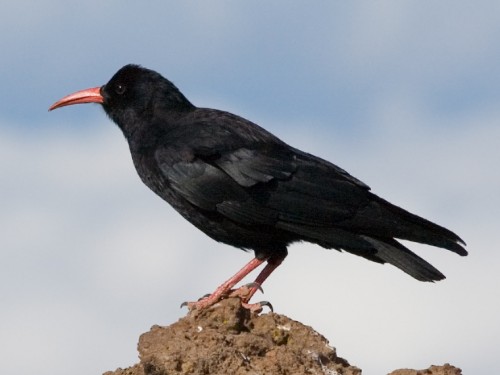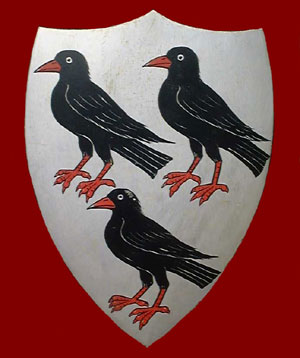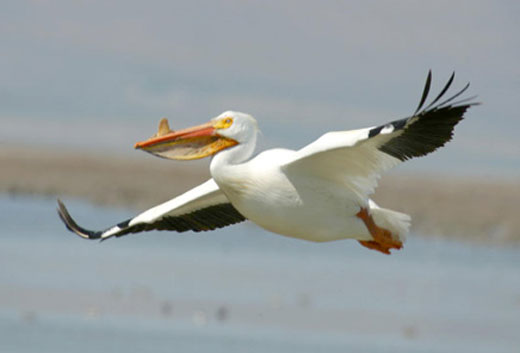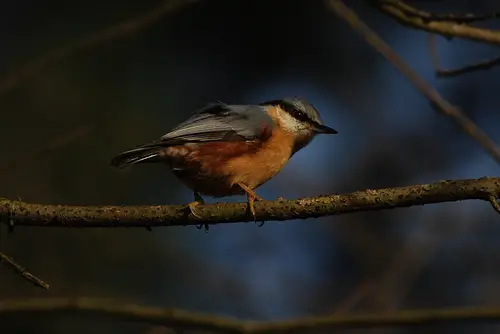Red-Billed Chough
The Red-billed Chough, or simply just known as the Chough, is a bird that belongs to the grow family. There are 8 Chough sub-species which breed in Europe, Asia, and North Africa. This bird was first scientifically described by Carolus Linnaeus in 1758 in his famous published work, Systema Naturae. Linnaeus originally named it as Upupa pyrrhocorax but then this was then given its own genus (Pyrrhocorax) by Marmaduke Tunstall in Orinthologia Britannica in 1771.
The 8 Chough sub-species are:
- Pyrrhocorax pyrrhocorax pyrrhocorax – the nominate species is endemic to Ireland, Scotland, Wales, and the Isle of Man in the United Kingdom. It has also been re-colonised in Cornwall, England.
- Pyrrhocorax pyrrhocorax erythropthalmus – first scientifically described in 1817 by Louis Jean Pierre Vieillot. Its range covers all of Europe except for Greece. It is both greener and larger than the nominate species.
- Pyrrhocorax pyrrhocorax barbarus – first scientifically described in 1954 by Charles Vaurie. This bird is found at La Palma in the Canary Islands and North Africa. Compared to the above Continental European species, it has a greener gloss, has longer wings and tail, and is bigger.
- Pyrrhocorax pyrrhocorax baileyi – Was first scientifically described by Charles Vaurie 1 year later in 1955. It is endemic to Ethiopia where it occurs in two separate regions. It is duller in colour than the Pyrrhocorax pyrrhocorax barbarus.
- Pyrrhocorax pyrrhocorax docilis – first described in 1774 by Johann Friedrich Gmelin. Its range is from Afghanistan to Greece. It is larger than its African relative, but its plumage has little gloss and is very green. It also has a smaller bill.
- Pyrrhocorax pyrrhocorax himalayanus – first described in 1862 by John Gould. As the name suggests, its range is from the Himalayas to western China. It is the largest of all Pyrrhocorax’s and has purple-blue glossy feathers, and a long tail.
- Pyrrhocorax pyrrhocorax centralis – first described in 1928 by Erwin Stresemann. It breeds in Central Asia. It can be distinguished from its Himalayan relative as it is less blue and is smaller.
- Pyrrhocorax pyrrhocorax brachypus – in 1871, Robert Swinhoe scientifically described this bird which lives in southern Siberia, Mongolia, and central and northern China. It’s appearance is similar to Pyrrhocorax pyrrhocorax centralis but has a weaker bill.
The nominate species is known for its glossy black plumage, red legs, red bill, and its loud call. The Red-billed Chough is known for its acrobatic flight. Mates are faithful to each other as they pair for life. They display fidelity to one another at its breeding site which is usually a crevice or a cave in a cliff face. Its nest is constructed with sticks and is lined with wool. During breeding, female Red-billed Chough’s lay a clutch of 3 eggs. It will feed in short grazed grassland by eating invertebrates.
Threats to his bird include agricultural practices, predation, and parasites. Agricultural practices are the main culprit for the Red-billed Chough’s population decline in Europe. Fortunately, on a global scale, this bird is not threatened.




